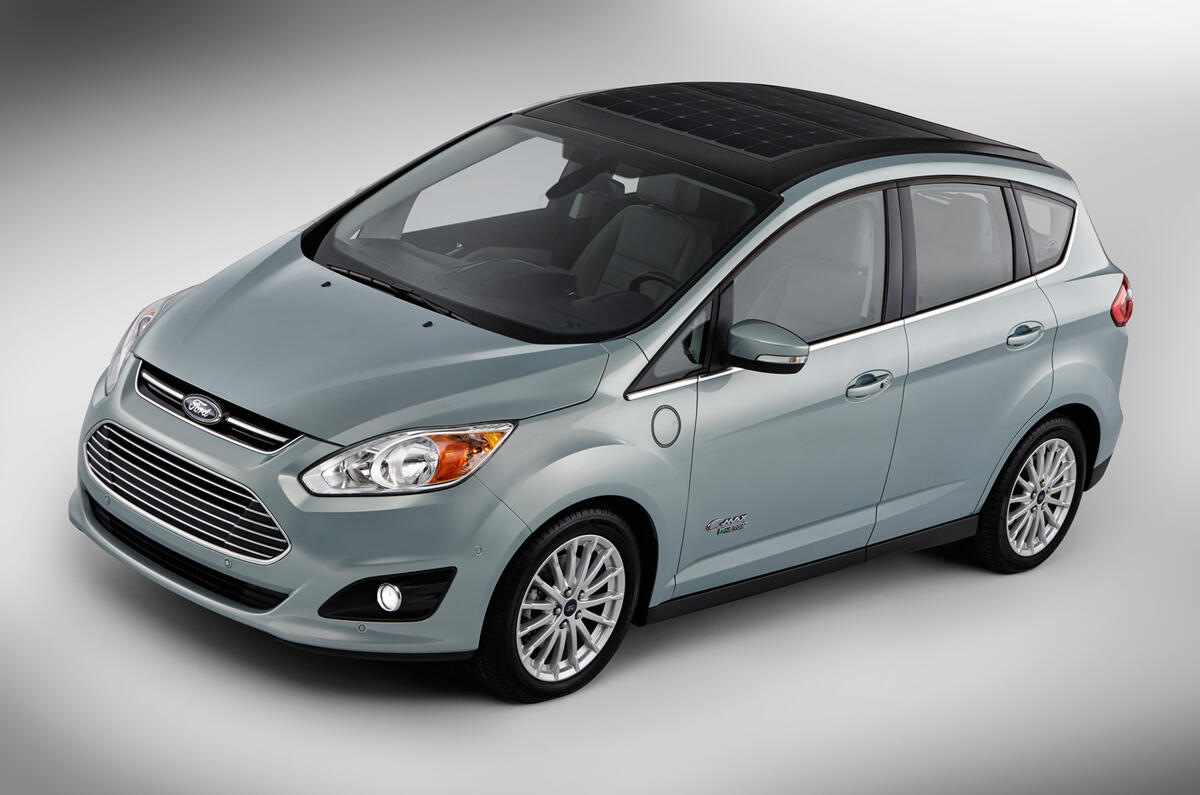Ford estimates that motorists could save approximately $500 (about £300) per year in energy bills if the company’s conceptual solar-powered C-Max was ever made viable for production.
The Ford C-Max Solar Energi Concept, unveiled at the International CES technology expo in Las Vegas this week, is based on the plug-in hybrid version of the Blue Oval’s medium-sized people carrier currently on sale in the US.
The roof features a 1.5-square-metre array of 275W photovoltaic cells supplied by Ford’s solar technology partner, SunPower.
To recharge, the car sits under a canopy of approximately 15-20 square metres in size – slightly larger than the average parking space. It acts as a Fresnel lens, concentrating more of the sun’s rays onto the Ford’s solar panels.
Ford says the car uses existing autonomous driving technologies, such as the auto-park function that is already a feature of the C-Max, to move a few metres during the day to track the sun’s movement through the sky.
Using this method, Ford says the C-Max’s lithium ion batteries can be recharged in about eight hours, based on the average amount of sunlight received by US cities.
Besides the roof-mounted solar array, the concept has not required significant mechanical tweaking from the existing C-Max PHEV. The solar array weighs about 2kg in total, so does not add significant weight to the vehicle.
David McCreadie, Ford Manager of Electric Vehicle Infrastructure and Smart Grid, explained that the software controlling the lithium ion battery management might need to be reconfigured to optimise recharging. Ford’s boffins will delve more deeply into the technology later this year.
“Ford has not come out and said ‘we’re going to turn this into a production vehicle’, but after CES has ended we’re going to start a testing phase to look at some of the finer details that we’re still working on," said McCreadie. "We’re moving in the direction of getting this to be fully viable.




Join the debate
Add your comment
Another exercise in auto industry maths
-
Marvel, or white elephant?
This might be a fun and interesting experiment, but I can't see it being a practical solution.
After all, when the sun's shining isn't there a chance that you might actually want to use the car instead of watching it recharge its batteries under this car port?
Very clever and a good idea ...